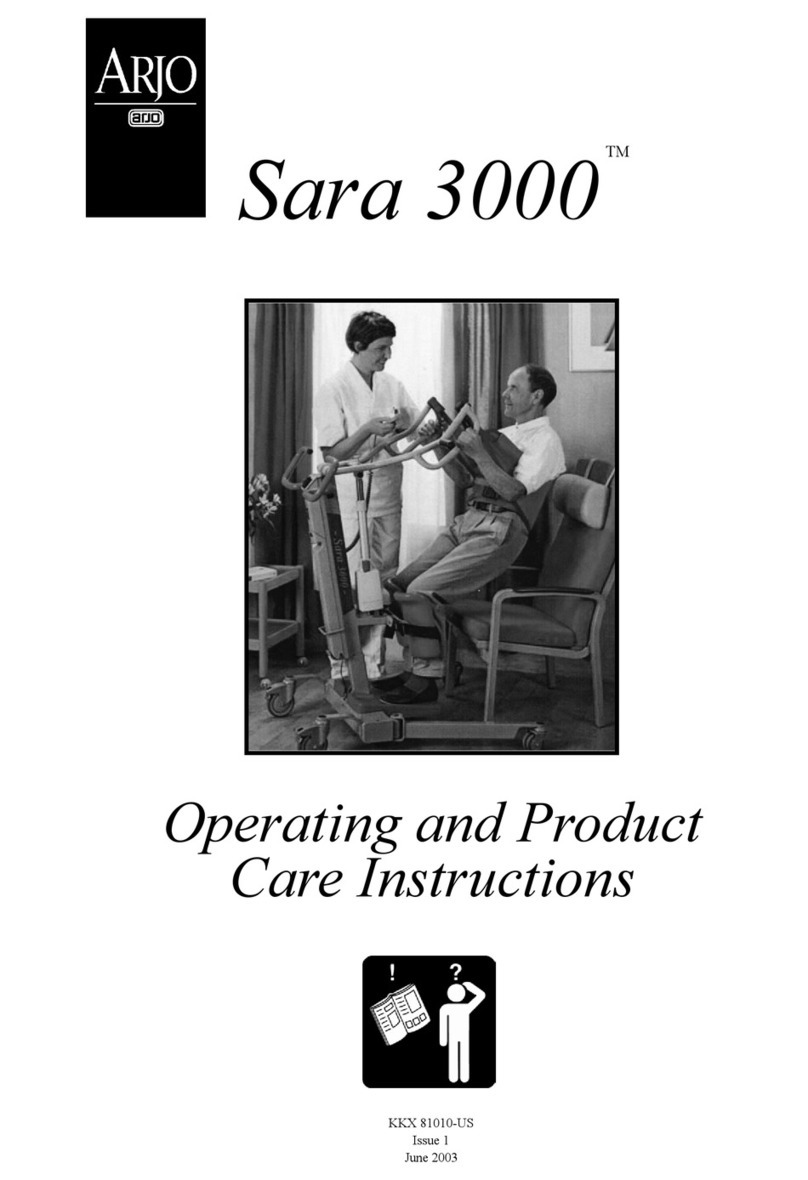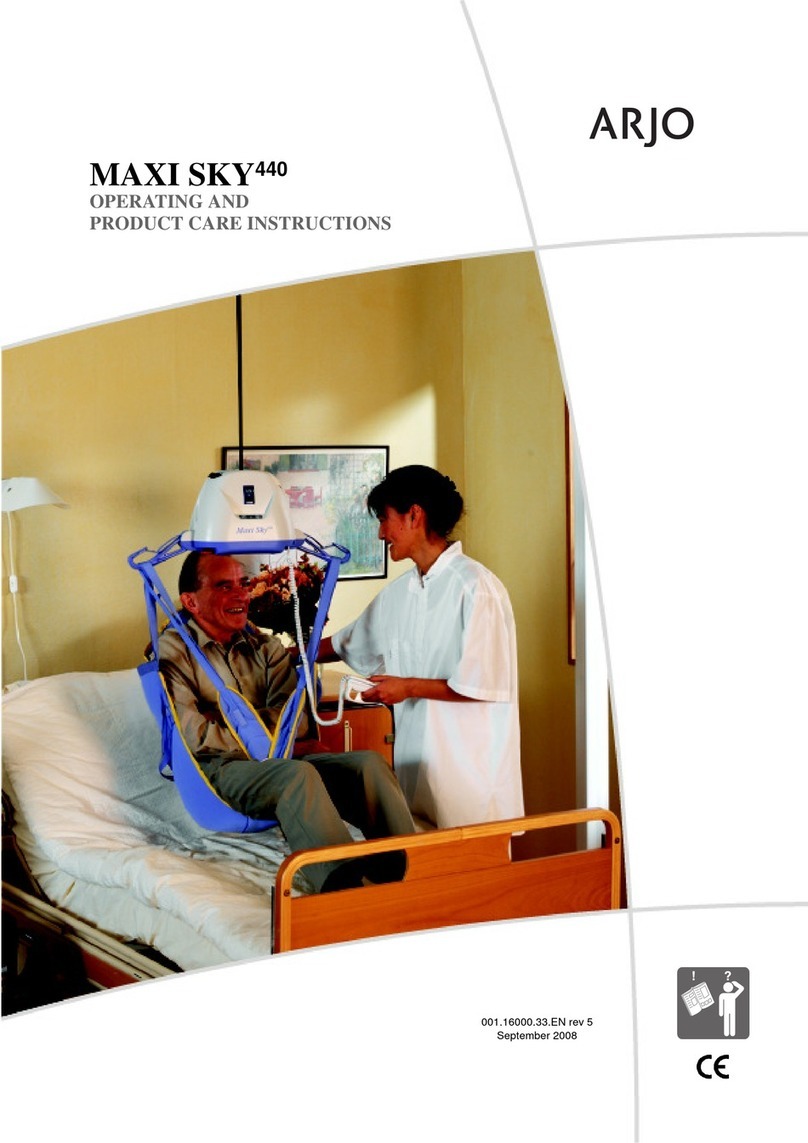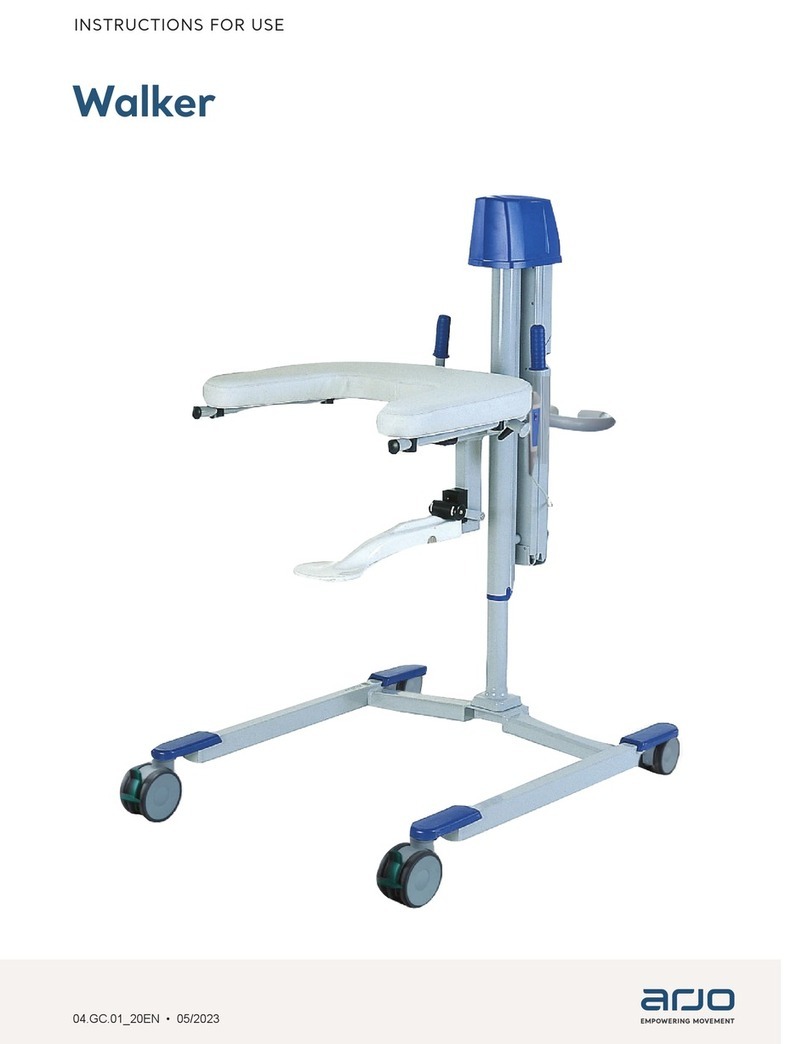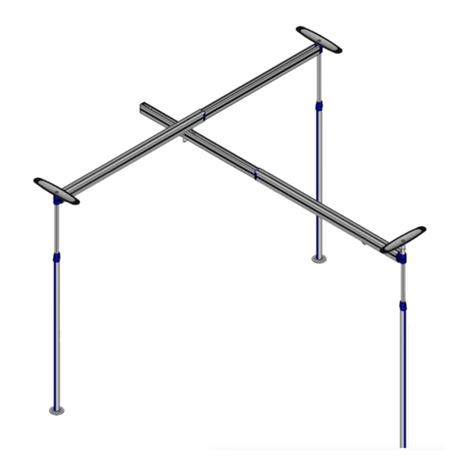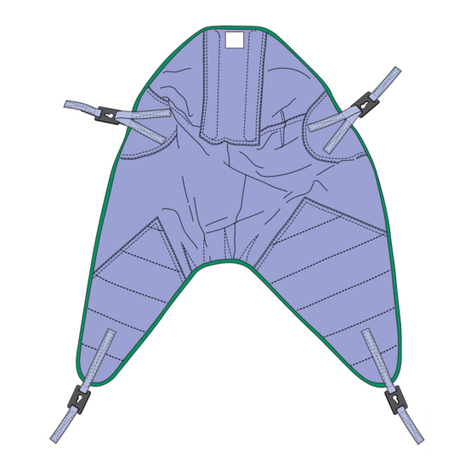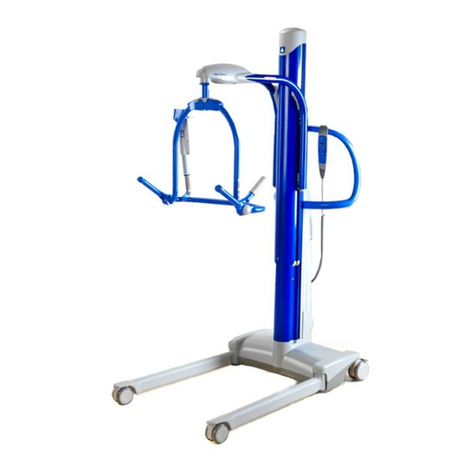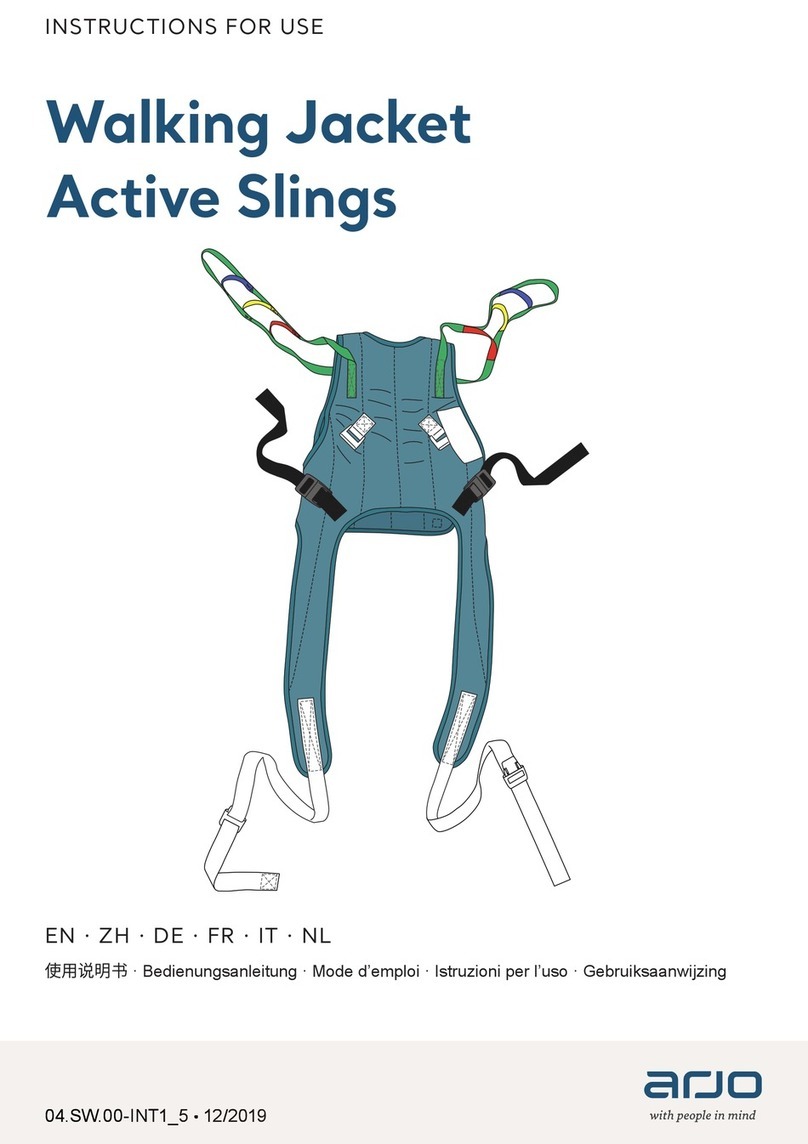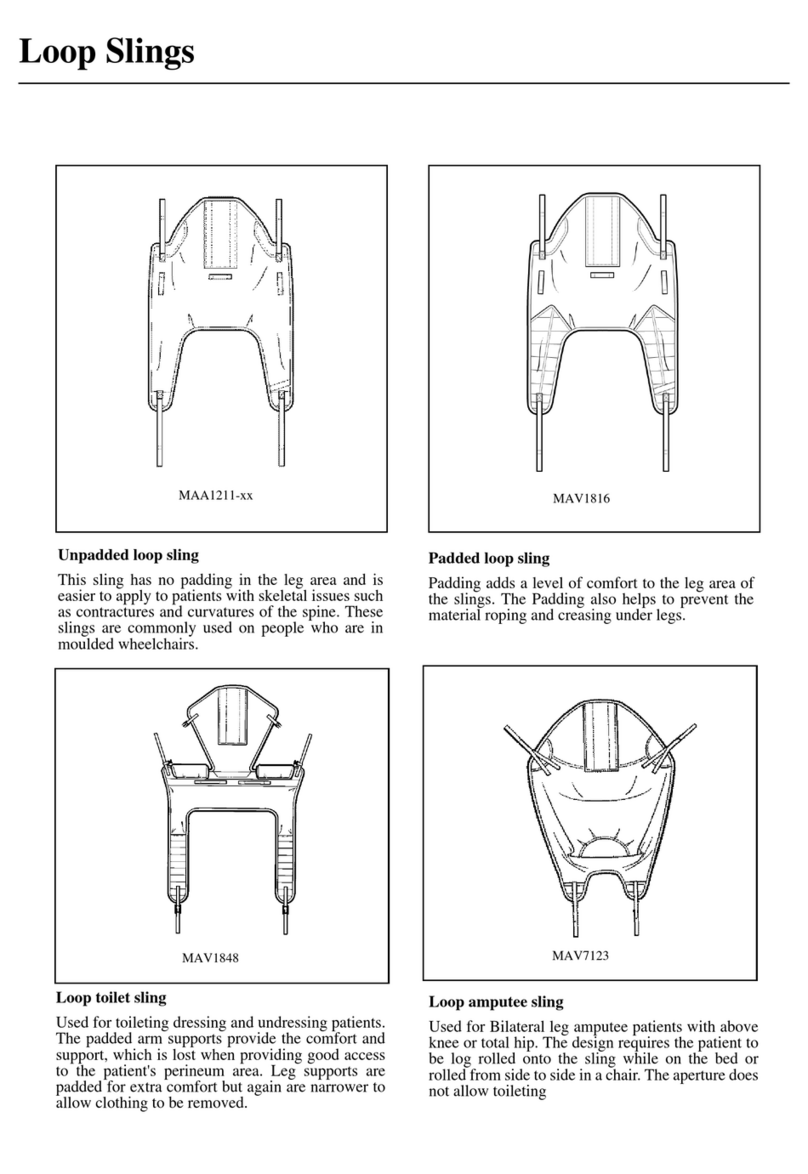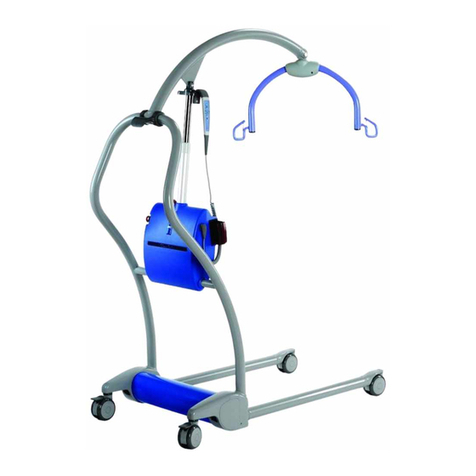
Lift Minstrel Maxi 500 Maxi Twin
SWL 190 kg
OE
NJ
OE NJOE
Spreader Bar 4 point 2 point 2 point
Small 2 point
Medium 4 point
Large
Sling SWL Size Size Size Size Size
MLA2000 NJOE M, L, XL S, M, L, XL S, M S, M, L, XL M, L, XL
MLA2000A NJOE M, L, XL M, L, XL M M, L, XL M, L, XL
MLAAS2000 NJOE M, L, XL S, M, L, XL S, M S, M, L, XL M, L, XL
0/$ NJOE M, L, XL S, M, L, XL S, M S, M, L, XL M, L, XL
MLA3000 NJOE M, L, XL S, M, L, XL S, M S, M, L, XL M, L, XL
MFA2100 NJOE S, M, L, XL,
XXL S, M, L, XL,
XXL S, M S, M, L, XL,
XXL S, M, L, XL,
XXL
MFA2000 NJOE M, L, XL M, L, XL * S, M S, M, L, XL M, L, XL
Lift Maxi Move Maxi Sky 440
SWL 125 kg
OE NJOE NJOE
Spreader Bar 2 point
Small 2 point
Medium
2 point loop
Walking
jacket 4 point Fix
Sling SWL Size Size Size Size Size
MLA2000 NJOE S, M S, M, L, XL S, M, L, XL M, L, XL S, M, L, XL
MLA2000A NJOE M M, L, XL M, L, XL M, L, XL M, L, XL
MLAAS2000 NJOE S, M S, M, L, XL S, M, L, XL M, L, XL S, M, L, XL
0/$ NJOE S, M S, M, L, XL S, M, L, XL M, L, XL S, M, L, XL
MLA3000 NJOE S, M S, M, L, XL S, M, L, XL M, L, XL S, M, L, XL
MFA2100 NJOE S, M S, M, L, XL,
XXL S, M, L, XL,
XXL S, M, L, XL,
XXL S, M, L, XL,
XXL
MFA2000 NJOE S, M S, M, L, XL S, M, L, XL M, L, XL M, L, XL
Lift 0D[L6N\ Maxi Sky 2
SWL NJOE NJOE NJOE NJOE
Spreader Bar 2 point
Medium 2 point
small 2 point
medium 4 point
Sling SWL Size Size Size Size
MLA2000 NJOE S, M, L, XL S, M S, M, L S, M, L, XL
MLA2000A NJOE M, L, XL M M, L M, L, XL
MLAAS2000 NJOE S, M, L, XL S, M S, M, L S, M, L, XL
0/$ NJOE S, M, L, XL S, M S, M, L S, M, L, XL
MLA3000 NJOE S, M, L, XL S, M S, M, L S, M, L, XL
MFA2100 NJOE S, M, L, XL, XXL S, M S, M, L, XL, XXL S, M, L, XL, XXL
MFA2000 NJOE M, L, XL S, M S, M, L S, M, L, XL
1RWIRUOLIWIURPÀRRU
EN
